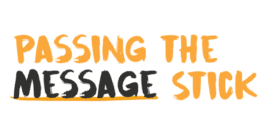More than 1,000 words

Photo: Medianet Images/ AAP
23 March 2022 at 5:37 pm
Charities need to overcome their natural reluctance to advocate during an election campaign and think about the techniques that will have the greatest impact, even if this means herding animals into photos, writes David Crosbie.
Many working in charities take a self-effacing approach to their work and role – recognising their limits ahead of their achievements. This form of humility is endearing, but there are times when our work – what we are seeking to achieve, the people we are working to support – demand that we’re positive and assertive about what we do, and what should be done.
An election lead-up is one of those times when we need to put aside reservations, and bravely advocate for our charitable purpose, and solutions to make Australia a better place.
One starting point for planning how to influence public policy, and gain a place on the election agenda, is to think in pictures.
We used to call it creative epidemiology – the capacity to take sets of numbers and make them meaningful through representation in compelling images or events.
Many years ago, the Australian Bureau of Statistics released new data on average alcohol consumption in Australia across gender and age groups. The Alcohol and other Drugs Council of Australia, where I was the CEO, decided to apply creative epidemiology principles and turn the relatively uninteresting figures into a newsworthy display.
We dressed up four mannequins as an average family: two parents (mum and dad, and two older teenage children – one boy, one girl).
We then calculated the family’s total annual alcohol consumption, and broke it down using known product preferences (using market information). This enabled us to prepare a large display, with the family in the middle, surrounded by all the beer, wine, spirits and other alcohol they would drink on average in a year. It was a lot of alcohol.
The photo went viral internationally, online and across all forms of media. We conducted over 100 interviews in Australia, and around the world, promoting our message that most alcohol problems were caused by episodic drinking (drunkenness).
Thinking in pictures can start with the most absurd ideas. Overseeing a partnership seeking to reduce Christmas drink driving, I once arranged for a live reindeer (we called him Rudolph) to be breath tested outside a Fitzroy hotel by then Collingwood football club coach Leigh Mathews, at the back of a .05 booze bus. TV star Glenn Ridge (from Sale of the Century) was along for the fun as well.
The photo made the front pages of the major newspapers, and all the key news outlets covered our message – and they said it couldn’t be done!
For every creative epidemiology success story, I can tell many more about failing to attract media and community attention for really important information and reports. Failure is a wonderful teacher.
This week saw another example of the difference an interesting event or good photo can make.
This staged event was covered in over 100 media outlets in Australia and around the world.
On the same day, an important new survey from the Insurance Council of Australia attracted little media coverage. This is despite the findings having a powerful message, about how the community is recognising the need to prepare for increased natural disasters. There was no photo, no story, no cut through quotes, just the key report findings distributed in a media release.
News value is pretty clear. Most people now are news literate – they understand what is likely to be newsworthy, and why.
Charities often produce reams of words, statements, policies, reports, policy positions, recommendations, and forward plans. Getting these words right is seen as very important by most charities. We can spend hours agonising over subtle meanings. We all know and accept that good documentation is a necessary part of maintaining credibility, effectiveness and even income.
The way we present ourselves more broadly to the community, through various media, is also important to credibility, effectiveness and income. How we are seen – whether we are valued – matters.
From my perspective, it seems many charities invest a great deal more into their words, and much less into how they are going to communicate their messages, or the relationships they will need to advance their advocacy.
The latest Australia Tax Office data (2019/20) suggests charities and NFPs employ over 2.5 million people. That is roughly one-in-five employees in Australia – 20 per cent of the Australian workforce. By any measure, we have a massive economic and social footprint, and that is before we factor in the millions of volunteers and all the work they do.
As we approach the next federal election, every single House of Representatives candidate should know about the charities in their electorate. If they don’t, what does that say about us? Are we passive recipients of attention? Can we wait to be noticed? Should we downplay our importance or the level to which our communities benefit from our work? Should we not seek a seat at the national policy table?
Charities gain few supporters by passively waiting at doors to rooms where the big decisions have already been made.
In coming weeks, the Community Council for Australia will release details of our marginal electorates survey, clearly showing that voters are connected to their charities and want to see governments support them.
What will really make a difference? The report? The numbers? No. The real impact will come via the engagement every charity has with local candidates – the events and photo opportunities they can create. This can positively promote the value of our work, and the advancement of solutions that can make a real difference in communities across Australia.
It’s really not that hard to create a relationship-building opportunity in your charity during an election period. It might be an award, an event, an activity, or a release of new information. Local candidates will happily attend if they see an opportunity to support a local charity, especially if they can use an interesting photo of themselves in their own media.
I am not suggesting charities across Australia should all be herding animals into photos (although sometimes it might work!). But I am suggesting waiting for political candidates to notice your work is probably not the best strategy, if you’re really committed to advancing the needs of your organisation and the community it serves. I look forward to seeing more than a thousand charity photos during the election campaign.







